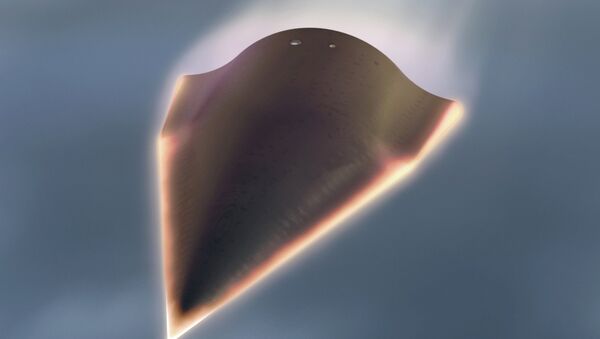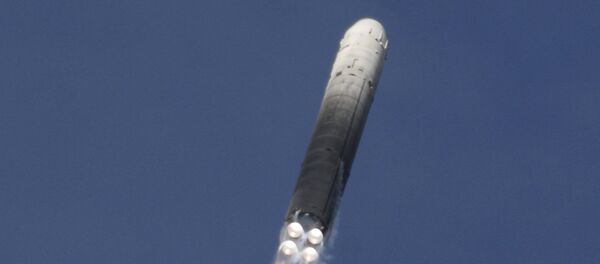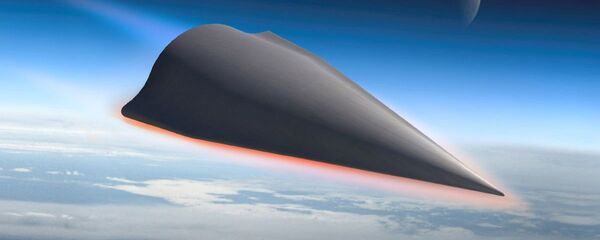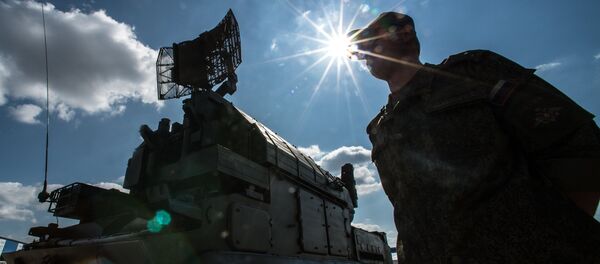A hypersonic weapon usually has a speed between 3,840 miles per hour (Mach 5) and 7,680 miles per hour (Mach 10). Furthermore, these systems use sophisticated technologies for maneuvering and boast allow the rapid delivery of warheads, precise targeting and survivability against wide range of missile defense systems.
Last year Russia conducted a series of tests of the Yu-71 hypersonic attack aircraft. The Yu-71 is part of secret missile program codenamed "Project 4202." The glider was said to reach speeds of up to 7,000 miles per hour. Due to its outstanding maneuverability and high speed the system can overcome any defense shield, Ostkraft noted.
But that is half the story. According to analytical website Ostkraft.ru, this year Russia successfully tested its experimental Yu-74 hypersonic glide vehicle. The Yu-74 was carried by the intercontinental-range RS-18A (NATO codename: SS-19 Stiletto) ballistic missile system. The glider was launched from the Dombarovsky missile base in the Orenburg region and hit a target located at Kura Missile Test Range in northern Kamchatka region, the Russian Far East.
Designed to carry up to 24 nuclear-loaded Yu-74 gliders, each Sarmat ballistic missile will be able to hit any target located within a 6.2 thousand mile radius in one hour.
Each Yu-74 glider can be equipped with a nuclear warhead, electronic warfare (EW) applications or false target simulators.
"These features guarantee penetration of any existing and prospective missile defense system of a potential adversary. By adopting such systems Russia's Strategic Missile Forces will significantly increase their efficiency," the analytical website emphasizes.
Ostkraft underscores that the Yu-74 gliders would not only evade NATO's missile defense systems but will be also capable of penetrating through the US THAAD shield. It argues that while the Terminal High Altitude Area Defense (THAAD) system is effective in intercepting outdated R-17 Elbrus tactical ballistic missiles, it is potentially vulnerable to the threat posed by advanced missile systems.
The Russians are taking NATO's saber-rattling and muscle-flexing in Eastern Europe seriously, French journalist Victor Ayoli noted in his recent article for Agora Vox. Therefore, Moscow will do whatever it takes to secure Russia's borders to prevent a repeat of the Wehrmacht's Operation Barbarossa invasion in 1941,the journalist stressed.
"Russians are ordinary people. They are afraid of war and they really want to avoid it. The last one cost [the Soviets] more than twenty-eight million lives. But once lured into war, they fight it to the bitter end. This unique trait of the Russian national character the West has misunderstood countless times in the last 1,000 years," Ayoli emphasized.
The Washington Free Beacon reported about the successful launch of Russia's hypersonic glider on April 22, citing an unnamed defense official.
In his interview to the media outlet Mark Schneider, a former Pentagon strategic forces policymaker, noted that if the reports of the test are confirmed then it would be "a major threat development."
"Russia has an extensive program underway on hypersonic vehicles. This year the Russian state media is reporting that a hypersonic cruise missile is being developed for Russian naval vessels including the '5th generation' Husky missile submarine that is now under development," he stressed.




